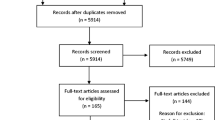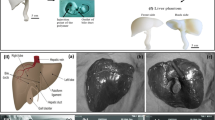Abstract
Microsurgery is a general term for surgery combining surgical microscope and specialized precision instruments during operation. Training in microsurgery requires considerable time and training resources. With the rapid development of computer technologies, virtual surgery simulation has gained extensive attention over the past decades. In this work, we take advantage of mixed reality (MR) that creates an interactive environment where physical and digital objects coexist, and present an MR framework for the microsurgery simulation. It enables users to practice anastomosis skills with real microsurgical instruments rather than additional haptic feedback devices that are typically used in virtual reality-based systems, and to view a realistic rendering intra-operative scene at the same time, thus creating an immersive training experience with such a visual-tactile interactive environment. A vision-based tracking system is proposed to simultaneously track microsurgical instruments and artificial blood vessels, and a learning-based anatomical modeling approach is introduced to facilitate the development of simulations in different microsurgical specialities by rapidly creating virtual assets. Moreover, we build a prototype system for the simulation specializing in microvascular hepatic artery reconstruction to demonstrate the feasibility and applicability of our framework.














Similar content being viewed by others
References
Tamai, S.: History of microsurgery. Plast. Reconstr. Surg. 124(6S), e282–e294 (2009)
Microsurgeon.org: Microsurgery definition. https://www.microsurgeon.org/microsurgerydef, (2021) Accessed on 08 Apr 2021
Roohi, S.A.: Tips and tricks in microvascular anastomoses. In: The Current Perspectives on Coronary Artery Bypass Grafting. IntechOpen (2020)
Chan, W.Y., Matteucci, P., Southern, S.J.: Validation of microsurgical models in microsurgery training and competence: a review. Microsurg. Off. J. Int. Microsurg. Soc. Eur. Fed. Soc. Microsurg. 27(5), 494–499 (2007)
Byvaltsev, V.A., Akshulakov, S.K., Polkin, R.A., Ochkal, S.V., Stepanov, I.A., Makhambetov, Y.T., Kerimbayev, T.T., Staren, M., Belykh, E., Preul, M.C.: Microvascular anastomosis training in neurosurgery: A review. Minim. Invasive Surg. (2018). https://doi.org/10.1155/2018/6130286
Javid, P., Aydın, A., Mohanna, P.N., Dasgupta, P., Ahmed, K.: Current status of simulation and training models in microsurgery: a systematic review. Microsurgery 39(7), 655–668 (2019)
Crouch, G., Wong, G., Hong, J., Varey, A., Haddad, R., Wang, Z.Z., Wykes, J., Koutalistras, N., Clark, J.R., Solomon, M., et al.: Validated specialty-specific models for multi-disciplinary microsurgery training laboratories: a systematic review. ANZ J. Surg. 91(6), 1110–1116 (2021)
Hosain, M.: Microsurgery training: are the live models era coming in to the tail?–a literature review. Journal of Advances in Medicine and Medical Research pp. 97–109 (2021)
StandfordMedicine: Microsurgery essentials. https://plasticsurgery.stanford.edu/education/microsurgery.html, (2021) Accessed 20 Aug 2021
Wanderer, S., Waltenspuel, C., Grüter, B.E., Strange, F., Sivanrupan, S., Remonda, L., Widmer, H.R., Casoni, D., Andereggen, L., Fandino, J., et al.: Arterial pouch microsurgical bifurcation aneurysm model in the rabbit. JoVE J. Vis. Exp. 159, e61157 (2020)
Erel, E., Aiyenibe, B., Butler, P.E.: Microsurgery simulators in virtual reality. Microsurg. Offi. J. Int. Microsurg. Soc. Eur. Fed. Soc. Microsurg. 23(2), 147–152 (2003)
Hoshyarmanesh, H., Zareinia, K., Lama, S., Sutherland, G.R.: Structural design of a microsurgery-specific haptic device: neuroarmplushd prototype. Mechatronics 73, 102481 (2021)
Rangarajan, K., Davis, H., Pucher, P.H.: Systematic review of virtual haptics in surgical simulation: A valid educational tool? J. Surg. Educ. 77(2), 337–347 (2020)
Yang, L., Etsuko, K.: Review on vision-based tracking in surgical navigation. IET Cyber-Syst. Robot. 2(3), 107–121 (2020)
Xiang, N., Yang, X., Zhang, J.J.: Tsfps: An accurate and flexible 6dof tracking system with fiducial platonic solids. In: Proceedings of the 29th ACM International Conference on Multimedia, pp. 4454–4462 (2021)
Neal, M.L., Kerckhoffs, R.: Current progress in patient-specific modeling. Brief. Bioinform. 11(1), 111–126 (2010)
Bücking, T.M., Hill, E.R., Robertson, J.L., Maneas, E., Plumb, A.A., Nikitichev, D.I.: From medical imaging data to 3d printed anatomical models. PloS one 12(5), e0178540 (2017)
Birbara, N.S., Otton, J.M., Pather, N.: 3d modelling and printing technology to produce patient-specific 3d models. Heart Lung Circ. 28(2), 302–313 (2019)
Fanua, S.P., Kim, J., Shaw Wilgis, E.: Alternative model for teaching microsurgery. Microsurgery 21(8), 379–382 (2001)
Atlan, M., Lellouch, A.G., Legagneux, J., Chaouat, M., Masquelet, A.C., Letourneur, D.: A new synthetic model for microvascular anastomosis training? A randomized comparative study between silicone and polyvinyl alcohol gelatin tubes. J. Surg. Educ. 75(1), 182–187 (2018)
Xiao, Z., Samii, M., Wang, J., Pan, Q., Xu, Z., Ju, H.: Training model for the intraluminal continuous suturing technique for microvascular anastomosis. Sci. Rep. 11(1), 1–9 (2021)
Remie, R.: The pvc-rat and other alternatives in microsurgical training. Lab. Anim. 30(9), 48–52 (2001)
De Virgilio, A., Costantino, A., Ebm, C., Conti, V., Mondello, T., Di Bari, M., Cugini, G., Mercante, G., Spriano, G.: High definition three-dimensional exoscope (vitom 3d) for microsurgery training: a preliminary experience. Eur. Arch. Otorhinolaryngol. 277(9), 2589–2595 (2020)
Chen, W.F., Eid, A., Yamamoto, T., Keith, J., Nimmons, G.L., Lawrence, W.T.: A novel supermicrosurgery training model: the chicken thigh. J. Plast. Reconst. Aesthet. Surg. 67(7), 973–978 (2014)
Creighton, F.X., Feng, A.L., Goyal, N., Emerick, K., Deschler, D.: Chicken thigh microvascular training model improves resident surgical skills. Laryngoscope Investig. Otolaryngol. 2(6), 471–474 (2017)
de Giacomo Carneiro, C., Scapini, F.: The rabbit as an experimental model in laryngology (2009)
Yamamoto, T., Yamamoto, N., Yamashita, M., Furuya, M., Hayashi, A., Koshima, I.: Establishment of supermicrosurgical lymphaticovenular anastomosis model in rat. Microsurgery 37(1), 57–60 (2017)
Rodríguez, A., Álvarez, Á., Aguirrezabalaga, J., Martelo, F.: The anteromedial thigh flap as a training model of a perforator flap in rat. J. Reconstr. Microsurg. 23(05), 251–255 (2007)
Otoole, R.V., Playter, R.R., Krummel, T.M., Blank, W.C., Cornelius, N.H., Roberts, W.R., Bell, W.J., Raibert, M.: Measuring and developing suturing technique with a virtual reality surgical simulator. J. Am. Coll. Surg. 189(1), 114–127 (1999)
Kazemi, H., Rappel, J.K., Poston, T., Hai Lim, B., Burdet, E., Leong Teo, C.: Assessing suturing techniques using a virtual reality surgical simulator. Microsurgery 30(6), 479–486 (2010)
Alaraj, A., Luciano, C.J., Bailey, D.P., Elsenousi, A., Roitberg, B.Z., Bernardo, A., Banerjee, P.P., Charbel, F.T.: Virtual reality cerebral aneurysm clipping simulation with real-time haptic feedback. Oper. Neurosurg. 11(1), 52–58 (2015)
Ryu, J., Choi, J., Kim, H.C.: Endoscopic vision-based tracking of multiple surgical instruments during robot-assisted surgery. Artif. Organs 37(1), 107–112 (2013)
Yang, L., Wang, J., Ando, T., Kubota, A., Yamashita, H., Sakuma, I., Chiba, T., Kobayashi, E.: Vision-based endoscope tracking for 3d ultrasound image-guided surgical navigation. Comput. Med. Imaging Graph. 40, 205–216 (2015)
Sánchez-González, P., Cano, A.M., Oropesa, I., Sánchez-Margallo, F.M., Pozo, F.D., Lamata, P., Gómez, E.J.: Laparoscopic video analysis for training and image-guided surgery. Minim. Invasive Ther. Allied Technol. 20(6), 311–320 (2011)
Robu, M., Kadkhodamohammadi, A., Luengo, I., Stoyanov, D.: Towards real-time multiple surgical tool tracking. Comput. Methods Biomech. Biomed. Eng. Imaging Vis. pp. 1–7 (2020)
Liu, X., Plishker, W., Shekhar, R.: Hybrid electromagnetic-aruco tracking of laparoscopic ultrasound transducer in laparoscopic video. J. Med. Imaging 8(1), 015001 (2021)
Gadwe, A., Ren, H.: Real-time 6dof pose estimation of endoscopic instruments using printable markers. IEEE Sens. J. 19(6), 2338–2346 (2018)
Richa, R., Poignet, P., Liu, C.: Three-dimensional motion tracking for beating heart surgery using a thin-plate spline deformable model. Int. J. Robot. Res. 29(2–3), 218–230 (2010)
Wong, W.K., Yang, B., Liu, C., Poignet, P.: A quasi-spherical triangle-based approach for efficient 3-d soft-tissue motion tracking. IEEE/ASME Trans. Mechatron. 18(5), 1472–1484 (2012)
Yang, B., Wong, W.K., Liu, C., Poignet, P.: 3d soft-tissue tracking using spatial-color joint probability distribution and thin-plate spline model. Pattern Recogn. 47(9), 2962–2973 (2014)
Schoob, A., Kundrat, D., Kahrs, L.A., Ortmaier, T.: Stereo vision-based tracking of soft tissue motion with application to online ablation control in laser microsurgery. Med. Image Anal. 40, 80–95 (2017)
Song, J., Wang, J., Zhao, L., Huang, S., Dissanayake, G.: Dynamic reconstruction of deformable soft-tissue with stereo scope in minimal invasive surgery. IEEE Robot. Autom. Lett. 3(1), 155–162 (2017)
Antiga, L., Piccinelli, M., Botti, L., Ene-Iordache, B., Remuzzi, A., Steinman, D.A.: An image-based modeling framework for patient-specific computational hemodynamics. Med. Biol. Eng. Comput. 46(11), 1097–1112 (2008)
Taylor, C.A., Figueroa, C.: Patient-specific modeling of cardiovascular mechanics. Annu. Rev. Biomed. Eng. 11, 109–134 (2009)
Tahir, W., Kura, S., Zhu, J., Cheng, X., Damseh, R., Tadesse, F., Seibel, A., Lee, B.S., Lesage, F., Sakadžic, S., et al.: Anatomical modeling of brain vasculature in two-photon microscopy by generalizable deep learning. BME Frontiers 2021 (2021)
Bhalodia, R., Elhabian, S.Y., Kavan, L., Whitaker, R.T.: Deepssm: A deep learning framework for statistical shape modeling from raw images. In: International Workshop on Shape in Medical Imaging, pp. 244–257. Springer (2018)
Kong, F., Wilson, N., Shadden, S.C.: A deep-learning approach for direct whole-heart mesh reconstruction. arXiv preprint arXiv:2102.07899 (2021)
Müller, M., Heidelberger, B., Hennix, M., Ratcliff, J.: Position based dynamics. J. Vis. Commun. Image Represent. 18(2), 109–118 (2007)
Liu, M.Y., Tuzel, O., Veeraraghavan, A., Chellappa, R.: Fast directional chamfer matching. In: 2010 IEEE Computer Society Conference on Computer Vision and Pattern Recognition, pp. 1696–1703. IEEE (2010)
Yu, Q., Wei, H., Yang, C.: Local part chamfer matching for shape-based object detection. Pattern Recogn. 65, 82–96 (2017)
Hartley, R.I., Sturm, P.: Triangulation. Computer vision and image understanding 68(2), 146–157 (1997)
Liu, S., Li, T., Chen, W., Li, H.: Soft rasterizer: A differentiable renderer for image-based 3d reasoning. In: Proceedings of the IEEE International Conference on Computer Vision, pp. 7708–7717 (2019)
Xiang, N., Wang, R., Jiang, T., Wang, L., Li, Y., Yang, X., Zhang, J.: Sketch-based modeling with a differentiable renderer. Comput. Anim. Virtual Worlds 31(4–5), e1939 (2020)
Mirza, M., Osindero, S.: Conditional generative adversarial nets. arXiv preprint arXiv:1411.1784 (2014)
Kato, H., Ushiku, Y., Harada, T.: Neural 3d mesh renderer. In: Proceedings of the IEEE Conference on Computer Vision and Pattern Recognition, pp. 3907–3916 (2018)
WirelessWorld: Advantages of x-ray | disadvantages of x-ray. https://www.rfwireless-world.com/Terminology/Advantages-and-Disadvantages-of-X-Ray.html (2021), Accessed on 15 Aug 2021
Pharr, M., Jakob, W., Humphreys, G.: Physically based rendering: from theory to implementation. Morgan Kaufmann (2016)
Xu, L., Liu, Q.: Real-time inextensible surgical thread simulation. Int. J. Comput. Assist. Radiol. Surg. 13(7), 1019–1035 (2018)
Yu, P., Pan, J., Qin, H., Hao, A., Wang, H.: Real-time suturing simulation for virtual reality medical training. Comput. Anim. Virtual Worlds 31(4–5), e1940 (2020)
Wu, P.C., Wang, R., Kin, K., Twigg, C., Han, S., Yang, M.H., Chien, S.Y.: Dodecapen: Accurate 6dof tracking of a passive stylus. In: Proceedings of the 30th Annual ACM Symposium on User Interface Software and Technology, pp. 365–374 (2017)
Senior, M.A., Southern, S.J., Majumder, S.: Microvascular simulator-a device for micro-anastomosis training. Ann. R. Coll. Surg. Engl. 83(5), 358 (2001)
Brown, J., Sorkin, S., Latombe, J.C., Montgomery, K., Stephanides, M.: Algorithmic tools for real-time microsurgery simulation. Med. Image Anal. 6(3), 289–300 (2002)
Grober, E.D., Hamstra, S.J., Wanzel, K.R., Reznick, R.K., Matsumoto, E.D., Sidhu, R.S., Jarvi, K.A.: Validation of novel and objective measures of microsurgical skill: hand-motion analysis and stereoscopic visual acuity. Microsurgery 23(4), 317–322 (2003)
Acknowledgements
This work was supported by XJTLU Research Development Fund No. RDF-21-02-065 and Neuravatar Project funded by High Education Innovation Fund (UK-HEIF).
Author information
Authors and Affiliations
Corresponding authors
Additional information
Publisher's Note
Springer Nature remains neutral with regard to jurisdictional claims in published maps and institutional affiliations.
Rights and permissions
Springer Nature or its licensor (e.g. a society or other partner) holds exclusive rights to this article under a publishing agreement with the author(s) or other rightsholder(s); author self-archiving of the accepted manuscript version of this article is solely governed by the terms of such publishing agreement and applicable law.
About this article
Cite this article
Xiang, N., Liang, HN., Yu, L. et al. A mixed reality framework for microsurgery simulation with visual-tactile perception. Vis Comput 39, 3661–3673 (2023). https://doi.org/10.1007/s00371-023-02964-1
Accepted:
Published:
Issue Date:
DOI: https://doi.org/10.1007/s00371-023-02964-1




